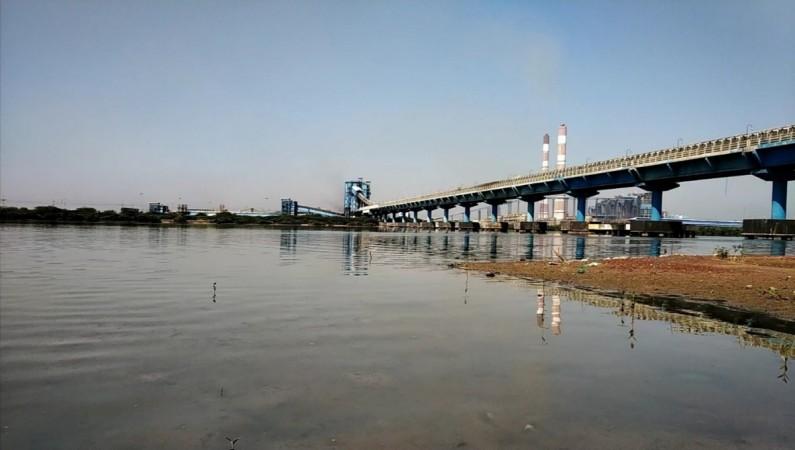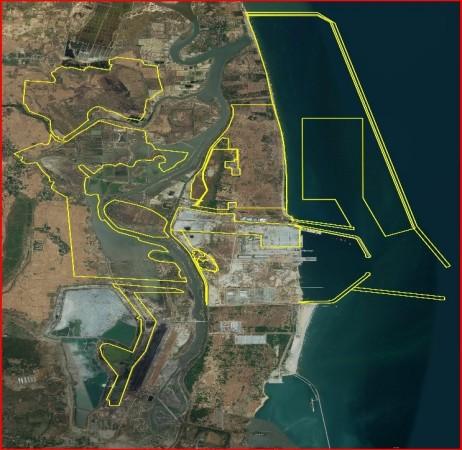
The Coastal Regulation Zone (CRZ) notification of 2019 was approved by the Union Cabinet and replaced the existing norms of CRZ (2011) on January 18, amongst much furore by activists and environmentalists. The new notification contains certain drastic changes such as land reclamation being allowed in the intertidal zone and shrinking of the No Development Zone (NDZ).
While the government stated that the new notification "will lead to enhanced activities in the coastal regions thereby promoting economic growth while also respecting the conservation principles of coastal regions," the activists claim that it is a schemed dilution of the CRZ notification of 2011, that was meant to protect the coastal ecology and livelihoods of coastal inhabitants like fisherfolk.
Civic groups in Mumbai and Goa have filed Public Interest Litigations (PIL) to quash and set aside the CRZ 2019 notification, acting on which the Bombay High Court issued a notice to the central government. Goa-based Rainbow Warriors alleged that the new notification is issued in violation of the Constitution of India and the Environment Protection Act, 1986, as well as the Environmental Rules, 1986.
"The 2011 notification took into account the traditional rights of the fisherfolk, who depend upon natural resources for their livelihood. But the new notification fails to do that by changing the land use to allow tourism and real estate," said K Sarvanan, a Chennai-based fisherman and activist who is also an active member of the Save Ennore Creek campaign.
The CRZ notification was first issued in 1991, with the purpose of regularising population and commercial pressure on the coastal stretch of the country, under the Environment Protection Act, 1986. It demarcated an area up to 500 metres from the high tide line (HTL) all along the coast as CRZ, classified it into four categories depending on the land use or sensitivity and regulated developmental activities in the areas.
But since then, the act has been iterated twice and modified 34 times, making it the most amended law in the history of India. After the 2011 notification was issued, Kerala, Karnataka and Maharashtra requested to amend it, keeping in view the tourism and urbanisation need.
Following this, a draft notification was released by the Ministry of Environment, Forests and Climate Change (MoEFCC) in April 2018 for public scrutiny, based on the inputs received from coastal states and union territories and the recommendations made by Shailesh Nayak committee.
The draft was analysed, and several comments and suggestions were made by environmentalists. Coastal Resource Centre, a Chennai-based organisation sent a list of comments demanding the withdrawal of the draft, to the MoEFCC, but these were hardly taken into consideration and the notification was passed unchanged, in a process that the activists termed to be "undemocratic". It was claimed that the process of drafting the notification was opaque as well.
Rajshekhar*, a Chennai-based advocate who has been involved in cases against environmental violations, said, "The 2019 draft was in circulation for comments and then the Government notified it, replacing the 2011 one. It's a definite dilution as compared to the 1991 and 2011 notifications. This notification process is not democratic and rests with the discretion of the executive. The notification itself is in contrary to science and common sense."
A major change in the 2019 notification is the reduction in the CRZ areas of tidal influenced water bodies to 50 meters from 100 meters, that the 2011 notification prescribed. The CRZ notification of 1991 that preceded the 2011 notification mandated a 500-meter buffer.
The list of comments on the draft by Coastal Resource Centre called it an invitation to disaster as it opens hazardous areas between the High Tide Line (HTL) and Hazard Line to development. It also said that "In removing the protection offered by the Hazard Line, the government has failed to take into consideration the properties, critical infrastructure and population that stands to be affected by effects of climate change and sea level rise. This foolhardy move will expose today's development to tomorrow's hazards, and thereby pervert the principle of sustainable development."
This notification also further categorises the CRZ-1, which includes the most ecologically sensitive areas like mangroves, coral reefs, sand dunes, and intertidal zones. While it was off-limits for tourism activities and infrastructure development, except for defence, strategic and rare public utility projects as per the 2011 notification, the new CRZ (2019) allows "eco-tourism activities such as mangrove walks, tree huts, nature trails, etc" in eco-sensitive areas, demarcated as CRZ-IA. It has also allowed land reclamation in intertidal or CRZ-1B areas, for ports and sea links.
The construction of hotels and beach resorts was allowed in CRZ-3 or relatively undisturbed areas that do not fall under CRZ-1 and 2 in the previous notification as well, but their construction was prohibited in NDZ of CRZ-3, which extended landwards up to 200 m from HTL.
The present notification bifurcates the CRZ-3 in two categories based on population, with CRZ-3 A referring to rural areas with a population density of 2,161 people per square kilometre or more as per the 2011 Census, and CRZ-3 B to rural areas with a population density lesser than 2,161 people per square kilometre. With the NDZ shrinking in CRZ-3 A, the CRZ (2019) technically allows resorts, hotels and tourism facilities to be built right up to HTL.
Kanchi Kohli, a researcher at the Centre for Policy Research, discussed its effect in a Down To Earth article saying, "CRZ-III areas are the ones where traditional communities live and subsist on the natural resources. While the notification changed the land use in CRZ-3 areas to bring in tourism, its impact on the livelihood of local communities have not been taken into account."
This classification is a topic of debate in itself as the accuracy of the data is in question. Pooja Kumar, an environmental activist from the Coastal Resource Centre was quoted as saying in The Indian Express, "We had a look at 2011 Census [data], and only state-wise population density is available, so how does one narrow down to the coastal region?"
The importance of regulation of pollution has also been undermined in the notification, as it allows land reclamation for setting up ports, harbours and roads facilities for discharging treated effluents, transfer of hazardous substances; and construction of memorials or monuments in CRZ-4.
There has been no addressal of these conflicts by the authorities until now. However, experts claim that this indicates serious flaws in the drafting process, which was also more of a closed-door discussion among bureaucrats.
"I make trips to the coastal regions like Ennore every month for assessment. We understand how ecologically sensitive the area is and this concern was put forward. But the decisions on the matters of the notification are made from Delhi. We want to protect the environment as well," said an official from the Department of Environment, Tamil Nadu, on conditions of anonymity, while explaining causes of the conflicts.
The CRZ notification of 2019 comes at a time when India's coastline is looking at large scale development in the form of the ambitious Sagarmala project, which was launched in 2015 by the Ministry of Shipping. It "aims to promote port-led development" by harnessing the "7,500 km long coastline (including offshore islands governed under Island Protection Zone Notification since 2011), 14,500 km of potentially navigable waterways and strategic location on key international maritime trade routes".
The government has identified about 550 projects worth Rs 8 lakh crore to be implemented by 2035. So far, 14 have been completed and 69 are under construction.
Setting up of 14 Coastal Economic Zones (CEZs) have also been envisioned by the government under the project. With it being a strategic project, it has clear exemption from the CRZ norms. The provisions for land reclamation and permission to build roads even in ecologically sensitive CRZ-I also facilitates the creation of CEZs. Experts hence claim that the CRZ (2019) has been drafted to facilitate the government's flagship projects like these.
While land reclamation was being done stealthily even before, this notification legalises it under these clauses, where it may fall under the domain of strategic purposes, public utilities and eco-tourism. A clear definition of these domains has also not been provided in the notification.
"The Sagarmala project is another project that will disturb whatever little coastal integrity we have left. Construction of such corridors to industrialise the coast is not practical in the present scenario. Coastlines are eroding due to man-made interventions and the day we don't have a beach but are left with Seawalls and Groynes isn't far away," said Rajshekhar.

However, the government termed Sagarmala a "concept and implementation towards Blue Revolution" in a press release in 2015, when the project was approved by the Union Cabinet.
It also said that the initiative would "strive to ensure sustainable development of the population living in the CEZ." The press release also stated that the aforementioned goal of sustainable development would be achieved by "synergising and coordinating with State Governments and line Ministries of Central Government through their existing schemes and programmes such as those related to community and rural development, tribal development and employment generation, fisheries, skill development, tourism promotion etc."
Back to the beginning
Despite the government's promise to endorse ecologically friendly projects and initiatives, environmental activists are not convinced. Local environmentalists claim that the rampant industrialisation of the Ennore creek region of Tiruvallur district began with the 'missing' Coastal Zone Management Plan (CZMP) 1996.
According to the Coastal Resource Centre, the last official coastal plan was made in 1996. Public inquiries on the whereabouts of the map such as an RTI filed in September 2014 revealed that the Tamil Nadu District Coastal Regulation Authority was not aware of the CZMP of the Ennore region.
This scrutiny was deemed as bizarre by activists as it meant that construction on coastal regions was authorised without following the CZMP framework. The activists claim that without the CZMP, government-sponsored encroachment took place by violating its own coastal regulations in the Ennore Creek.
It was in 2017 that the 'missing' CZMP 1996 map was obtained by the Coastal Resource Centre through an RTI filed by an activist who had availed the document in lieu of the 2004 tsunami.
According to a Scroll article published in June 21, 2017, a comparative study of the CZMP with the current state of the Ennore creek using Google Earth revealed that out of the total 8,000 acres of protected wetlands, 1,090 acres of land along the Ennore creek have been encroached upon by state and central Public Sector Undertakings (PSUs).

Government enquiries and initiatives conducted over the years indicate that the state has acknowledged the severity of environmental degradation in the region due to unregulated activities.
Cases such as the Madras High Court order on protection of mangroves in 2018, three-member panel headed by Justice (Retd) D Hariparanthaman in 2016, Chennai Rivers Restoration Trust (CRRT) formerly known as Adyar Poonga Trust (APT) formation in 2010, the National Green Tribunal (NGT) inquiry on the impacts of coal ash pollution on Ennore creek and surrounding areas of North Chennai Thermal Power Station (NCTPS) in 2016, etc are primary examples of the state accounting for severe pollution.
However, despite the state's acknowledgement through cases such as the Madras High Court order which entail violations by Vallur Thermal Power Station, the disputed land is yet to be vacated.
Even instances such as the discharge of coolant water from power stations into the creek, elevated levels of heavy metals in water and its biomagnified effects on marine life was blatantly negated by the TNPCB. "There is minimal pollution in the creek. We conduct environment assessment reports as monitory measures and so far, the pollution is under regulatory norms," said an official from Tamil Nadu Pollution Control Board, Guindy on conditions of anonymity.
Bhaskar, a fisherman from Nettukuppam revealed that despite what the officials claim, the situation is completely different on the ground. "We demanded the Tamil Nadu Electricity Board (TNEB) to discharge the coolant water from thermal power plants and Kamarajar port into the sea instead of the Kosasthalaiyar river. Not only did the TNEB not budge, but the authority over the river went into the control of the Public Works Department (PWD). They thought that the mouth of the creek won't get closed because of the flow of hot water but now the sand has reached the surface. Even the depth of the water bodies has decreased from six metres to four metres. Since the coolant water raises the overall temperature of the creek, fishes, crabs and prawns and other coastal resources have depleted in significant numbers."
"They only discuss everything with other high officials, we are not called for any talks," he added.
Activists have claimed that public meetings are heavily coloured to support the official's own vested interests.
On February 14, 2019, a stakeholder's consultation meeting was conducted by the Chennai Rivers Restoration Trust (CRRT) and Tamil Nadu Urban Infrastructure Financial Services Ltd regarding eco-restoration of the Ennore creek.
The meeting established, through a baseline survey conducted by Voyants Solutions Private Ltd., that industrial solid waste including fly ash from thermal power plants and major polluting heavy metals like mercury, arsenic, lead, etc were 'within the standards, according to Schedule 2 of the Hazardous Wastes Rules, 2008.
Fisherfolk and Environmental activists have claimed that the studies conducted did not follow adequate scientific procedures. "Instead of studying the quality of air and water over a period, these agencies publish studies based on samples taken on a single day. That way, the data will tell what you want it to say," alleged Saravanan.
Rajshekhar said that there is a need for proper scientific environmental impact assessment to study the existing baseline data. "Mapping of the extent and severity of contamination to assess the region's pollution load is necessary for our bit to ensure the survival of the creek for the future."
As per the fisherfolk community, a monitory and evaluative framework is the system's primary drawback.
RL Srinivasan from Kattukuppam said, "The officials at the district level keep changing so more than half the term goes into making them familiar with the issues pertaining to Ennore. But even after all this, when the perpetrators are government-owned companies, who do we complain to?"
According to government officials, the Environment Protection Act, 1986 works as a systematic deterrence against any act of violation in ecologically sensitive areas.
"Everybody is equal in the eyes of the law. In fact, for private enterprises, the violation is not as vindictive as it is for government officials. For us, if we violate any norms and get involved in a court case, our pension gets directly affected. This ensures that violations don't happen. Whatever violations that had happened over the years were minor cases and were punished accordingly" said an official at the Government of Tamil Nadu, Department of Environment who wished to remain anonymous.
Rajshekhar in response to the official's statement said that while the State has admitted to the findings, they won't attribute it to their failings. "Big businesses and big powers reap the benefits of what's happening in Ennore. If the TNPCB did its job sincerely, half of the problems would not have arisen. Till date, the state has not prosecuted (to obtain criminal punishment) a single violator of environmental laws. People in these regions have also been polarised and some have adapted by taking money from these entities."
"The law doesn't differentiate between a government violator and a private one. The sanctions of the law are the same and, in this case, the regulators maintain its perfect equality where nobody gets punished for anything," he added.
Economics of sustainability
While India adapts the Sustainable Development Goal (SDG) model as a part of the United Nation's Agenda 2030, SDG 14 'life below water' commits for protection of coastal and marine resources. Target 14.5 gives attention to the objective of conserving "at least 10 per cent of coastal and marine areas". But it has not been specified whether each coastal state is required to designate 10 per cent of its coastal area to the maintenance of biodiversity and ecosystem processes, or whether this is a global target.
Similarly, target 14.2 raises the need for clarity on issues of sustainable management in order to avoid "significant adverse impacts" and for defining and maintaining "healthy" coastal ecosystems.
Even with international and national guidelines such as the SDGs and CRZ notification, in the Indian context, it is the less powerful, non-metropolitan spaces which get 'sacrificed' for the greater good of human capital interests that come up in the narratives of unprecedented growth and development.
"We have acquired a habit of destroying regions that are economically and socially backward. Do you think that such pollution will be possible in areas such as Besant Nagar or Neelankarai?" asked Rajshekhar.
"From the beginning itself, the idea of industrialisation of north Chennai was a sacrifice for the greater good of development for the public. The morals of growth that concentrates in metro areas in comparison to those in the suburban spaces had always been based on the power of the stakeholders. However, considering that all our resources, from electricity, petroleum to water comes from there, the socio-economic and ecological degradation of Ennore has consequences to everyone. The situation is no longer 'us' versus 'them' anymore," said Kumar.
The way forward
With construction by way of reclamation on CRZ-1 areas now being permissible for defence, strategic purposes and public utilities, the environmentalists have claimed and written in their recommendations against the present CRZ notification that it favours coastal industrial development over coastal ecology and biodiversity. Its legality is being further questioned in the Bombay High Court through a new substantive PIL filed by Conservation Action Trust and environmental activist Debi Goenka, challenging the construction of a 35 kms long coastal road on reclaimed land.
While the project has CRZ clearance, the PIL is alleging a violation of its conditions and claims that the CRZ areas have been wrongly classified. Several environmentalists have also said that the project will destroy certain key ecologically diverse areas of the city and the loss of mangroves will only aggravate urban flooding.
Bombay High Court, in 2018, had passed landmark directions acting on a PIL filed by Bombay Environment Action Group (BEAG) regarding the destruction of mangroves in Maharashtra, which said that that there can be no construction activity within 50 meters of any mangrove area as all mangrove land will fall in Coastal Regulation Zone-1 category as per both the CRZ notifications of 1991 and 2011.
On the basis of this judgment, the Madras High Court had also declared in 2018 that the construction of a 3X500 megawatt Vallur Thermal Plant and ash dyke was in violation of the CRZ (2011), causing "environmental degradation, pollution and health hazards" which may result in "irreparable loss and grave hardship" on part of the ecology and the people of the locality. Activists hence claim that all hope is not lost even in the light of the new notification. "There are measures of accountability in place, it is the implementation of these measures that is flawed. A number of small wins have come our way but there is a long way to go," said Kumar.
Penalties of up to Rs 5 crore as "environmental damages" were imposed on thermal power plants that have not fully disposed of the fly ash they generated by the National Green Tribunal (NGT) in the November of 2018. The order made it legally binding for all thermal power plants to ensure complete disposal of or utilization of fly ash immediately.
While explaining the way forward from now, Sarvanan said, "CRZ has been implemented. Land reclamation is legalised and there is nothing in an institutional way that can be done now, of course until the elections. If a new government comes in power, then only can we hope for further amendments to the notification that may rectify all the errors that this one is making."
*Name changed on request














